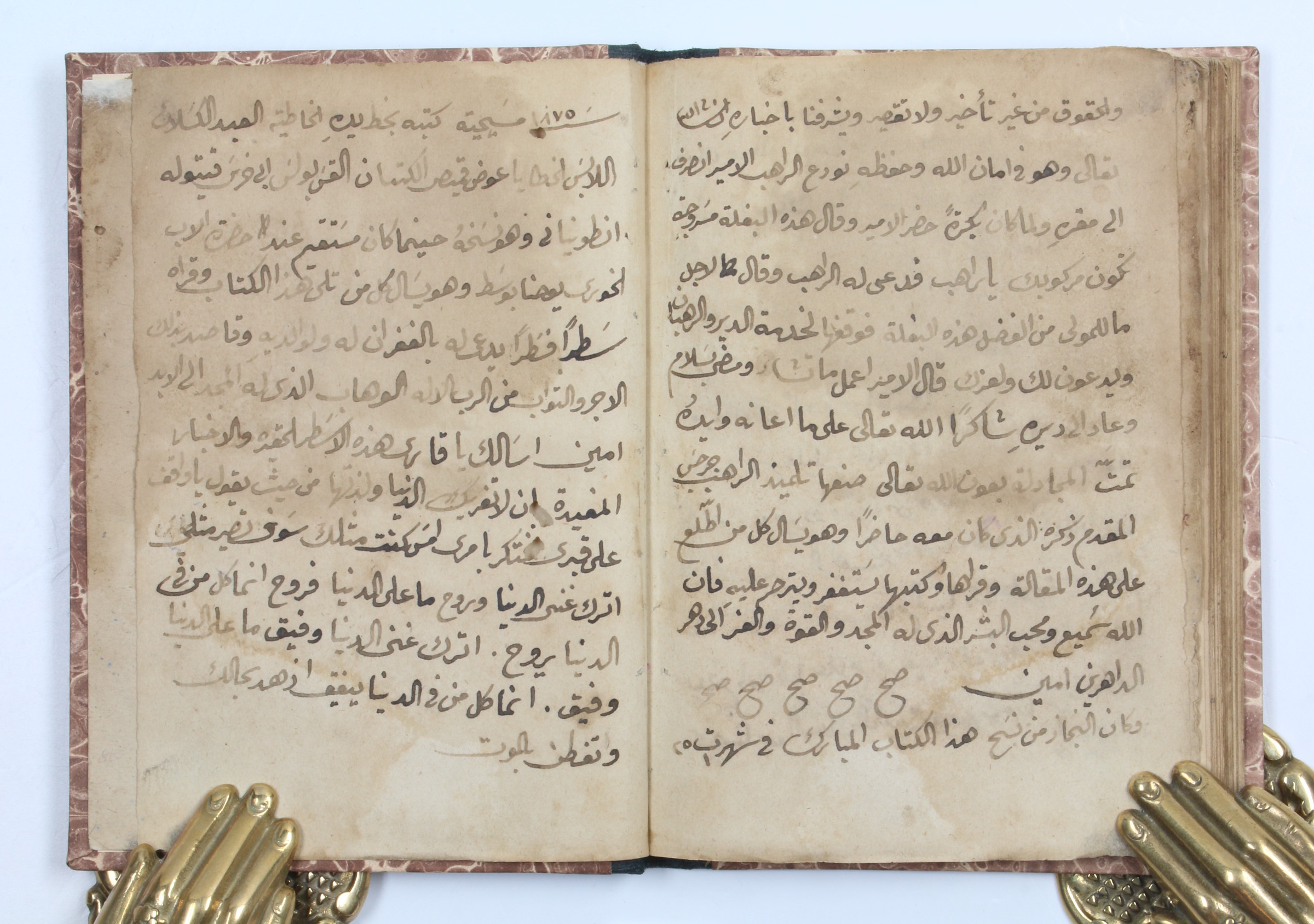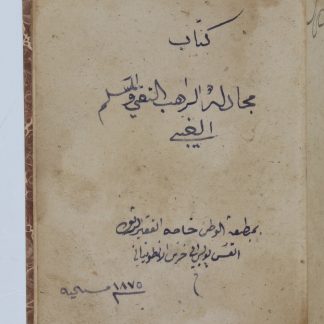"The monk and the Muslim": Christian apologetic dialogue in Arabic
Kitab hujat al-raahib al-naqii wa al-Muslim al-ghinah [The book of the dialogue between the pure monk and the wealthy Muslim].
Small 8vo (105 x 142 mm). 52 ff. Arabic manuscript on paper, with important words and phrases picked out in red. Modern marbled boards with black cloth spine.
€ 3.500,00
19th century manuscript of a literary tradition which can be traced back to the early days of Islam, featuring what may well be a unique retelling of its story. Originally written by eighth century Christians in Syriac, such dialogues, as they are called, follow a traditional narrative pattern: a Christian monk leaves his monastery and encounters a local powerful Muslim, and a conversation is exchanged. This often takes the form of a series of question-and-answer scenes, wherein the monk and the Muslim discuss their respective faiths. This monk-and-Muslim dialogue tradition was a genre of Christian apologist literature, and a method by which Middle Eastern Christians explored in literature their new spiritual and social role under Muslim rule.
In several early recorded cases the monk hails from a monastery called Bet Hale and the wealthy Muslim is a local powerful ruler; in the most popular version, which was translated from Syriac into Arabic, the monk is Timothy I, Patriarch of the Church of the East, and the Muslim is the third Abbasid caliph Al-Mahdi (reigned 775-785).
In the present manuscript retelling, the monk hails from the monastery Mar Semaan, probably one of two monasteries of that name which are still known today in Lebanon. This very likely places our manuscript in the Lebanese Orthodox tradition. The manuscript talks in detail about the journey that the monk made from his monastery to meet an emir of the Islamic community, the religious and emotional dialogue which passed between them, and what he saw and heard during his trip. It offers an interesting glimpse into the evolution of this story into the 19th century, perhaps addressed to Orthodox Christians under Ottoman rule.
The scribe makes another interestingly modern choice by arranging a short version of the title of the manuscript across the top of each page, much as one might see in a printed book from the period: at the top of each right-hand page is the word "dialogue" and on the top of each left-hand page is "the monk and the Muslim" (al-rahib wa al-Muslim), much in the way that a printed book might feature a running title.
Light dampstaining, some fading to a few leaves, especially of red ink.
















